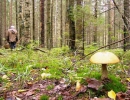GOOGLE ПОКУПАЕТ MOTOROLA ЗА $12,5 МЛРД

Компания Google, создатель платформы Android для мобильных телефонов, намерен приобрести пионера на рынке мобильных устройств компанию Motorola
Компания Google, создатель платформы Android для мобильных телефонов, намерен приобрести пионера на рынке мобильных устройств компанию Motorola
Компания Google, создатель платформы Android для мобильных телефонов, намерен приобрести пионера на рынке мобильных устройств компанию Motorola
Компания Google, создатель платформы Android для мобильных телефонов, намерен приобрести пионера на рынке мобильных устройств компанию Motorola
Компания Google, создатель платформы Android для мобильных телефонов, намерен приобрести пионера на рынке мобильных устройств компанию Motorola
Добавить комментарий
КОММЕНТАРИИ
Как и многие наши соотечественники искал как отправиться в Польшу и найти работу.
Перечитал массу интернет страниц, пересмотрел много роликов на Ютубе, но больше всего мне понравился сайт hochuvpolshu.com.
На нем я нашел несколько вариантов для работы, вычитал отзывы и опыт тех мужчин и женщин,
которые делятся своим опытом пребывания в Польше. Так же узнал как подготовить документы.
И всегда это на одной сайте.
Вот одна из свежих и интересных статей:
http://www.smokinstangs.com/member.php/278389-Leonehq
http://www.smokinstangs.com/member.php/277555-Leonqgp
http://woodlandtech.org/forum/phpBB3/viewtopic.php?f=5&t=306827
http://www.jeepin.com/forum/member.php?u=151795
http://www.x443001.secure.ne.jp/test/profile.php?mode=viewprofile&u=6384
ХААА,АВТОР РЕАЛЬНО ПОСТАРАЛСЯ
???? ????? ?????? 888 ????? ???? ?? ??? 7-24 ??? ???? ???? ??????? ? ??? ???????? ?????? ?? ???? ????? ? ?? ???? ???? ???? ???? ????? ?????? ??????? ? ????? ?????? ???? ? ?????? ? ??? ????????? ? ????? ?? [url=https://888starz-arabs.com/]download 888starz[/url] ?? 888 ?????.
I never could/felt awkward making small bets in an [url=https://thedietitiansudeshnaa.com/experience-the-thrills-of-online-casino-koi-spins/]https://thedietitiansudeshnaa.com/experience-the-thrills-of-online-casino-koi-spins/[/url], and the transition between game types was fast and smooth how on computer, so and software portable devices.
ЧИТАЙТЕ ТАКЖЕ
Более 70 человек были эвакуированы со сломавшегося фуникулера при помощи трех вертолетов. Это случилось на горнолыжном курорте Санкт-Мориц в Швейцарии. Кабины с пассажирами застряли на полпути к одной из гор на высоте 1,5 тыс. метров.
За неделю теряется до 10 любителей тихой охоты
29 cентября в Доме Отдыха «Абзаково» соберутся поклонники и ценители красоты грации и непосредственности. В этот вечер на подиум киноконцертного зала РК «NON STOP” выйдут претендентки на звание « Мисс Туризм Абзаково 2012». 20 очаровательных девушек будут бороться за титул "первой красавицы"!






 317450975
317450975